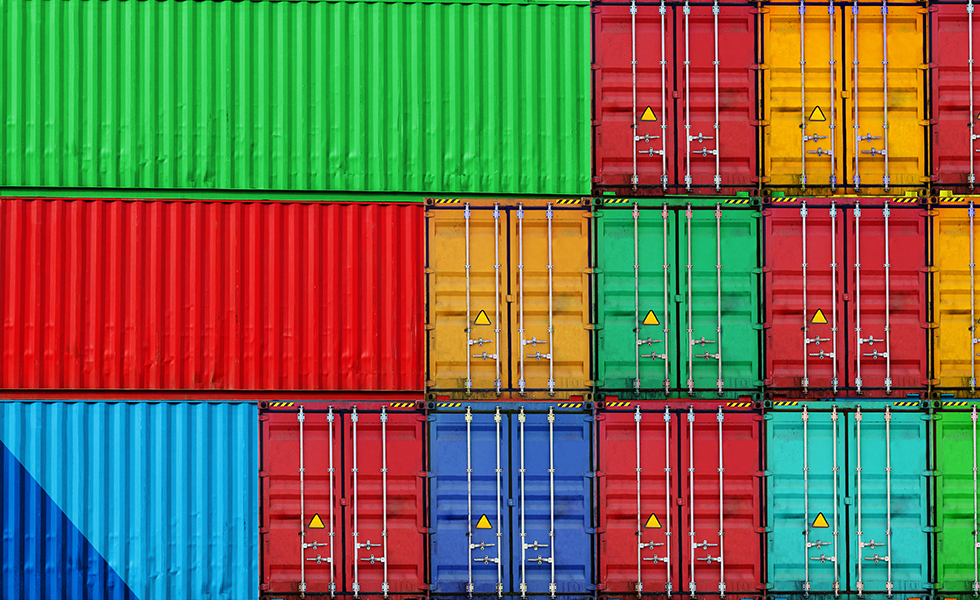Federated Hermes: Why invest in trade finance?
Federated Hermes: Why invest in trade finance?

The demand for trade finance – short-term loans to facilitate physical cross-border transactions – continues to increase, creating a compelling investment opportunity.
By Chris McGinley, Head of Trade Finance, Federated Hermes
A flourishing segment
Global merchandise trade volumes reached US$25tn in 2022 – up from approximately US$14tn in 2007[1] – bolstered by rapid growth in so-called south-south trade (between developing countries), which is forecast to represent 40% of global trade by 2030[2].
However, a complex regulatory environment coupled with a lack of understanding about the asset class has contributed to a global shortage of trade financing: the gap for global trade finance opportunities was valued at US$2.5tn by the Asian Development Bank in 2022[3], up from US$1.7tn two years previously, and is forecast to continue widening. This shortfall has created an array of potentially high-yielding financing deals for providers with the right resources, analytical teams and banking connections.
Uncorrelated returns
Among the factors that make trade finance a unique investment proposition is that it sits between public and private markets: it offers institutional investors the potential of uncorrelated returns of fixed income private markets – without any of associated liquidity constraints (Federated Hermes’ Trade Finance Strategy provides quarterly redemptions and daily mark-to-market information).
Figure 1: Federated Hermes Trade Finance returns vs traditional market indices
Colour coding shows darker shades as highly correlated to asset class (anything close to 1.0) and lighter shares as more lowly correlated. Past performance is not a reliable indicator of future performance.
Source: Morningstar
Floating rate asset class with robust loan structures
In common with leveraged loans, trade finance as an asset class benefits from having little sensitivity to the movement of interest rates – all loans are issued based on a spread over a floating rate (such as SOFR or the ICE BofA US Dollar 1-Month Deposit Offered Rate Constant Maturity Index). However, where trade finance loans differ from leveraged credit is that each transaction within a trade finance portfolio is originated as part of a structure with specific covenants (loans are typically collateralised by the goods being financed), typically avoiding the risks that leveraged loans are most exposed to (such as default risk).
Low volatility and reduced drawdown vs. public fixed income
The short-term nature of trade finance transactions – the average length of a deal is less than 24 months – ensures that the portfolio has lower volatility and a reduced drawdown profile compared to other fixed income asset classes. This is achieved by focusing on two main elements: the structure of the loan and the average life of the loan. A lot of loan structures are self-liquidating. In our transactions, many loans typically have a built-in ‘floor’ preventing their mark-to-market values being written down as aggressively as can sometimes be evidenced in corporate bonds. Moreover, by seeking to maintain the average life of the Federated Hermes’ Trade Finance Strategy at around 24 months, it ensures that a large proportion of the portfolio is focused on self-liquidating shorter-term transactions.
Figure 2: Risk/Reward profile relative to traditional market indices
Currency: USD Past performance is not a reliable indicator of future performance/
Source: Morningstar
Why invest in Federated Hermes’ Trade Finance Strategy?
A focus on essential goods which are material to the livelihood of populations around the globe. While many in the West often associate imported goods with high-end items, for much of the developing world such shipments cater to more basic needs.
Our Trade Finance portfolio and investment philosophy focuses on financing essential goods which are material to populations especially in emerging economies where the trade finance gap is most prominent. The Strategy enables investors to help reduce this gap, by co-investing in large corporate or financial players alongside leading global banks. It’s also an area that has seen rapid growth in trade volumes in the last few years and has the potential to provide superior deal margins.
Diversification across sectors, regions and loan types
Not all trade finance strategies are created equal. Some trade finance managers typically focus on one segment of the loan market. We strongly believe in the benefits of diversification. The Federated Hermes’ Trade Finance Strategy invests across a wide spectrum of loan types – ranging from shorter-term self-liquidating structures which enhance the liquidity profile of the portfolio, to more longer-term alpha generating project finance deals – while also utilising our expertise within the reserve-based loan space. Ultimately, this approach means we can access differentiated alpha sources and have a well-diversified portfolio which enables us to maintain a consistent risk-reward profile in various market conditions.
Long-term relationships with partner banks
Less-established trade finance operations can sometimes struggle to access the wider global trade finance market. It generally requires close relationships with leading international banks, which often play a key role in deal origination and typically help to co-finance the transactions (our average deal size can vary from US$500m to US$1.5bn). The team is very experienced and has built up long-standing relationships with more than 50 global finance institutions since inception. The team has specific expertise working with banks to originate attractive and varied deals.
In-depth analysis by skilled investment professionals
Every trade finance transaction is unique, specific to the cross-border flow of a particular set of goods. We never only rely on a bank’s assessment of any deal and will always conduct our own rigorous due diligence on the institution, the transaction, the loan structure, the legal landscape and the underlying collateral. Federated Hermes’ Trade Finance team typically performs a rigorous credit review on more than 150 deals in a given year. We also have a stringent focus on risk management; each portfolio position typically represents approximately 80-90bps in terms of the overall weight of the portfolio. Our approach allows us to reduce idiosyncratic risks at the portfolio level.
For more information on the Federated Hermes Trade Finance strategy, visit our website.
For professional investors only. The value of investments and income from them may go down as well as up, and you may not get back the original amount invested.
Any investments overseas may be affected by currency exchange rates. Past performance is not a reliable indicator of future results and targets are not guaranteed. This is a marketing communication. Distributed by Federated Hermes Limited , being Federated Hermes Limited and its subsidiaries(“Federated Hermes”). The main entities operating under Federated Hermes are: Hermes Investment Management Limited (“HIML”); Hermes Fund Managers Ireland Limited (“HFMIL”); Hermes Alternative Investment Management Limited (“HAIML”); Hermes Real Estate Investment Management Limited (“HREIML”); Hermes Equity Ownership Services Limited (“EOS”); Hermes Stewardship North America Inc. (“HSNA”); Hermes GPE LLP (“Hermes GPE”); Hermes GPE (USA) Inc. (“Hermes GPE USA”), Hermes GPE (Singapore) Pte. Ltd. (“HGPE Singapore”), Federated Investors Australia Services Pty Ltd. (“FIAS”) and Federated Hermes Japan Ltd (“FHJL”), Federated Hermes (UK) LLP (“FHUK”). HIML, HAIML and FHUK are each authorised and regulated by the Financial Conduct Authority. HAIML and HIML carry out regulated activities associated with HREIML. FHUK, HIML, Hermes GPE and Hermes GPE USA are each a registered investment adviser with the United States Securities and Exchange Commission (“SEC”) and HAIML and HFMIL are each an exempt reporting adviser. HGPE Singapore is regulated by the Monetary Authority of Singapore. FHJL is regulated by Japan Financial Services Agency and FIAS holds an Australian Financial Services Licence. HFMIL is authorised and regulated by the Central Bank of Ireland. HREIML, EOS and HSNA are unregulated and do not engage in regulated activity.









